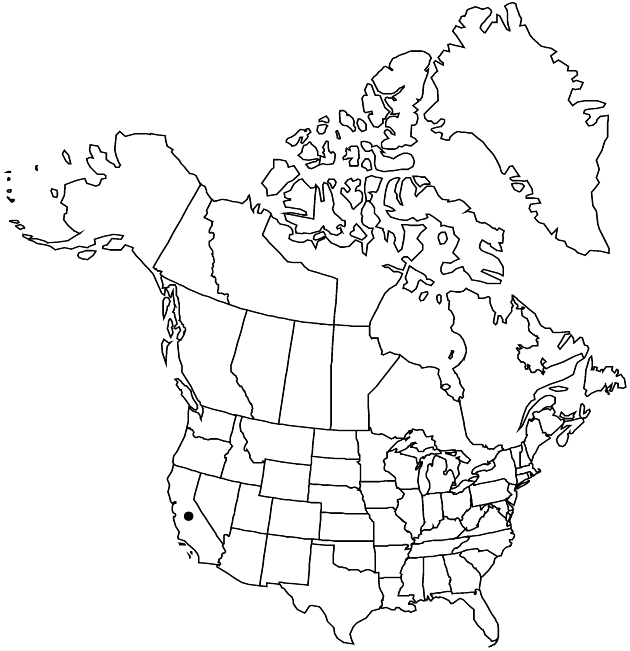Hulsea vestita subsp. parryi
Aliso 7: 413. 1972.
Common names: Parry’s alpinegold
Endemic
Basionym: Hulsea parryi A. Gray Proc. Amer. Acad. Arts 12: 59. 1876
Plants 10–40 (–50) cm. Leaves: proximal blades 1–5 cm, margins dentate to lobed, faces densely lanate to woolly; cauline leaves lanceolate. Heads 1. Involucres obconic, 8–10 mm diam. Phyllaries 7–10 mm, outer narrowly lanceolate, apices acuminate. Ray-florets 10–16; laminae orange to reddish orange, 5–7 mm. Disc corollas orange. Cypselae 5–7 mm; pappus-scales subequal, 1–2 mm. 2n = 38.
Phenology: Flowering late spring–summer.
Habitat: Rocky slopes, talus, and flats, montane to subalpine coniferous forests, sometimes chaparral, on granitic and metamorphic substrates
Elevation: 1200–2800 m
Discussion
Plants on limestone substrates from the northeastern San Bernardino Mountains have broadly spatulate basal leaves with undulate margins. The heads and florets are typical of subsp. parryi. These plants are retained within subsp. parryi; they deserve further study.
Selected References
None.
Lower Taxa
None.
... more about "Hulsea vestita subsp. parryi"
introrse +
connate +
herbaceous +
acuminate +
scarious +
absent +
hirsute +
papillate +
corymbiform +
continuous +
decurrent +
spatulate +
winged;ribbed;winged;ribbed +
1;15 +
stigmatic +
6;80 +
absent +
lanceolate +
Parry’s alpinegold +
glabrous +
zygomorphic +
monomorphic +
dimorphic +
silky-hairy +
5mm;7mm +
staminate +
reduced +
Calif. +
straight +
scabrellous +
distinct +
proximal +
1;5 +
bisexual +
dispersed +
singly +
Rocky slopes, talus, and flats, montane to subalpine coniferous forests, sometimes chaparral, on granitic and metamorphic substrates +
discoid +
indeterminate +
surrounding +
obconic +
basal +
lanceolate +
2-carpellate +
inferior +
attached +
anatropous +
subequal +
persistent +
fragile +
falling +
equal +
tough +
thick +
absent +
connate +
persistent +
distinct +
falling +
unequal +
Aliso +
1972 +
pistillate +
absent +
fertile +
epaleate +
pitted +
knobby +
fibrous +
distinct +
laciniate +
exalbuminous +
modifed +
2;4 +
Endemic +
alternate +
erect +
2-branched +
papillate +
Hulsea vestita subsp. parryi +
Hulsea vestita +
subspecies +
cylindric +
equaling +
shorter +
longer +
perennial +
